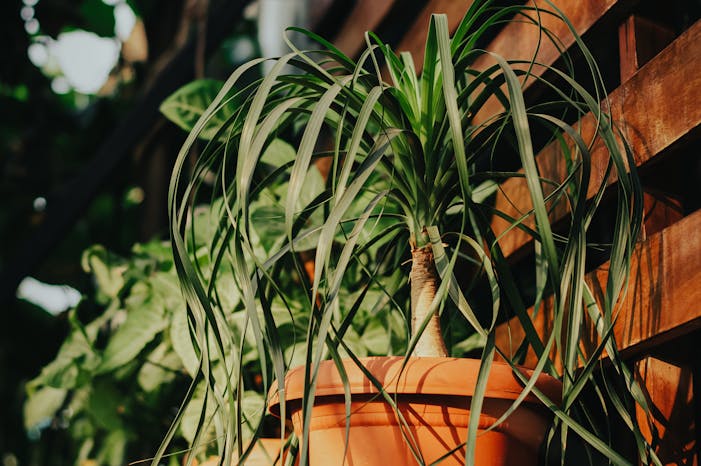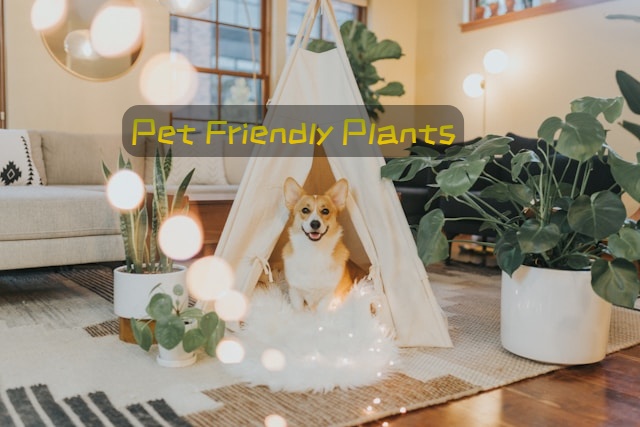Bringing greenery into your home can instantly elevate your space, improve air quality, and even boost your mood. But if you’re a dog owner and a beginner in plant care, choosing the right indoor plants can be tricky. Some plants are toxic to dogs, while others require extensive care. The good news? You can have a pet-friendly and plant-filled home without the stress. In this guide, we’ll explore the best indoor plants for beginners with dogs—low-maintenance, safe, and perfect for brightening up your space.
Why Choose Pet-Friendly Indoor Plants?
Keep Your Dog Safe While Enjoying Greenery
Many common houseplants, like pothos and snake plants, contain toxins that can be harmful to dogs. Even if your pup isn’t a chewer, accidents happen. Choosing non-toxic plants ensures your furry friend stays safe, even if they get curious and take a nibble.
Low-Maintenance Options for Beginners
If you’re new to indoor gardening, you need plants that are resilient and easy to care for. Fortunately, several dog-friendly houseplants thrive with minimal attention, requiring only occasional watering and indirect sunlight.

Best Indoor Plants for Beginners with Dogs
1. Areca Palm (Dypsis lutescens)
Areca palms, also known as butterfly palms, are perfect for beginners and completely safe for dogs. These tropical plants bring an elegant touch to your home and improve air quality by filtering toxins.
- Care Tips: Keep the soil slightly moist but not soggy. They thrive in bright, indirect light but can tolerate lower light conditions.
- Pet-Friendly Benefits: Non-toxic to dogs and adds humidity to the air, which is great for both plants and pets.
2. Calathea (Calathea spp.)
Calatheas, often called prayer plants, are known for their stunning foliage with vibrant patterns. They are non-toxic to dogs, making them a safe and stylish choice.
- Care Tips: Prefers indirect light and high humidity. Water when the top inch of soil feels dry.
- Pet-Friendly Benefits: Safe for dogs and helps purify indoor air.
3. Boston Fern (Nephrolepis exaltata)
Boston ferns are one of the most popular dog-friendly houseplants because they are non-toxic and have lush, feathery leaves that add beauty to any space.
- Care Tips: They need indirect light and regular watering to keep the soil moist. These plants thrive in humid environments, so misting them occasionally is beneficial.
- Pet-Friendly Benefits: Completely safe for dogs and enhances indoor air quality.
4. Spider Plant (Chlorophytum comosum)
Spider plants are nearly indestructible, making them ideal for beginners. Their long, arching leaves and tiny offshoots (called “spiderettes”) make them visually appealing.
- Care Tips: Thrives in bright, indirect light but can adapt to lower light. Water moderately and let the soil dry out between waterings.
- Pet-Friendly Benefits: Non-toxic to dogs and helps remove toxins like carbon monoxide from the air.
5. Parlor Palm (Chamaedorea elegans)
Parlor palms are another excellent choice for beginners who want a dog-safe houseplant with a tropical vibe. They are slow-growing and require minimal care.
- Care Tips: Tolerates low light and infrequent watering. Water when the top inch of soil is dry.
- Pet-Friendly Benefits: Safe for dogs and known for improving air quality.
6. Bamboo Palm (Chamaedorea seifrizii)
Bamboo palms are stylish, adaptable, and safe for pets. They grow well indoors and are a fantastic way to add height to your indoor plant collection.
- Care Tips: Prefers bright, indirect light but can tolerate lower light. Keep the soil consistently moist but not soggy.
- Pet-Friendly Benefits: Non-toxic to dogs and helps reduce indoor air pollutants.
7. African Violet (Saintpaulia)
If you want a pop of color, African violets are a great choice. These small flowering plants are non-toxic to dogs and easy to grow.
- Care Tips: Prefers bright, indirect light and slightly moist soil. Avoid getting water on the leaves to prevent spotting.
- Pet-Friendly Benefits: Completely safe for dogs and adds a splash of vibrant color to your home.
8. Prayer Plant (Maranta leuconeura)
Similar to the Calathea, prayer plants have beautifully patterned leaves that fold up at night, resembling hands in prayer.
- Care Tips: Needs medium to bright indirect light and prefers moist, well-draining soil.
- Pet-Friendly Benefits: Safe for dogs and a great conversation piece due to its unique leaf movement.
9. Peperomia (Peperomia spp.)
Peperomia plants come in various shapes and sizes, all of which are non-toxic to dogs. Their thick, waxy leaves make them drought-tolerant and easy to maintain.
- Care Tips: Thrives in medium to bright indirect light. Water when the topsoil feels dry.
- Pet-Friendly Benefits: Safe for dogs and great for small spaces due to their compact size.
Additional Pet-Safe Houseplants to Consider
10. Cast Iron Plant (Aspidistra elatior)
This nearly indestructible plant is perfect for beginners and completely safe for dogs.
- Care Tips: Can thrive in low light and requires infrequent watering.
- Pet-Friendly Benefits: Non-toxic and highly resilient.
11. Hoya (Hoya spp.)
Hoyas, also known as wax plants, have thick, waxy leaves and sometimes bloom fragrant flowers.
- Care Tips: Prefers bright, indirect light and well-draining soil.
- Pet-Friendly Benefits: Completely safe for dogs and easy to maintain.

12. Ponytail Palm (Beaucarnea recurvata)
Despite its name, the ponytail palm is not a true palm but rather a drought-tolerant succulent that is safe for dogs.
- Care Tips: Requires bright light and occasional watering. Allow the soil to dry out completely between waterings.
- Pet-Friendly Benefits: Non-toxic and a unique, low-maintenance plant.
Tips for Keeping Plants and Pets Happy
Train Your Dog to Avoid Plants
Even with dog-friendly indoor plants, it’s a good idea to train your pet to leave them alone. Reward-based training can help discourage chewing or digging in the soil.
Use Pet-Safe Planters and Soil
Choose sturdy, heavy-bottomed pots that won’t tip over easily. Also, avoid using fertilizers or pesticides that may contain harmful chemicals.
Keep Plants Out of Reach
Place plants on shelves, hanging baskets, or plant stands to reduce the temptation for curious pups.
Conclusion
Creating a lush, dog-friendly indoor garden is easier than you think! By choosing the best indoor plants for beginners with dogs, you can enjoy the beauty of houseplants without worrying about your pet’s safety. From air-purifying palms to vibrant violets, these plants add life to your home while keeping your furry friend safe. Start with one or two, and soon, you’ll be a pro at pet-safe indoor gardening!

